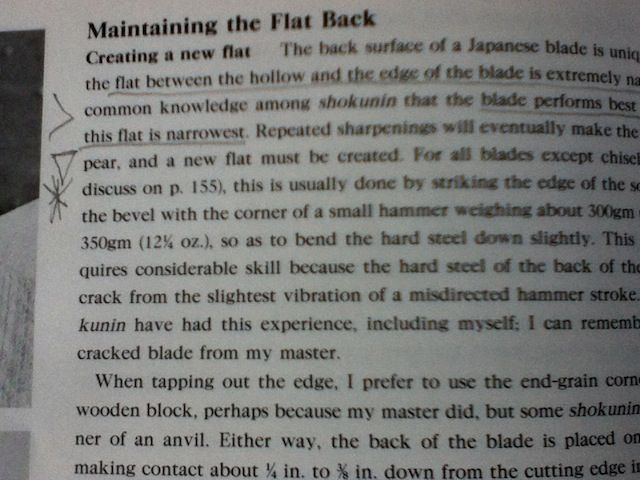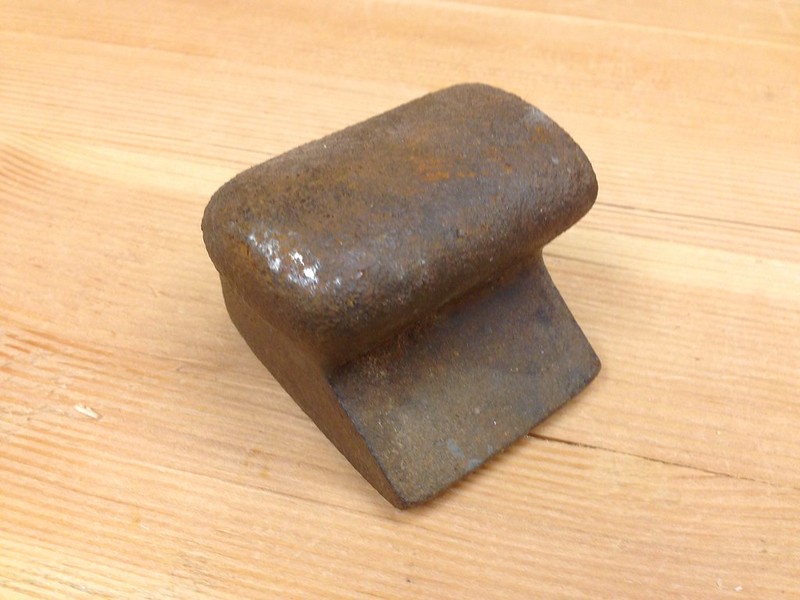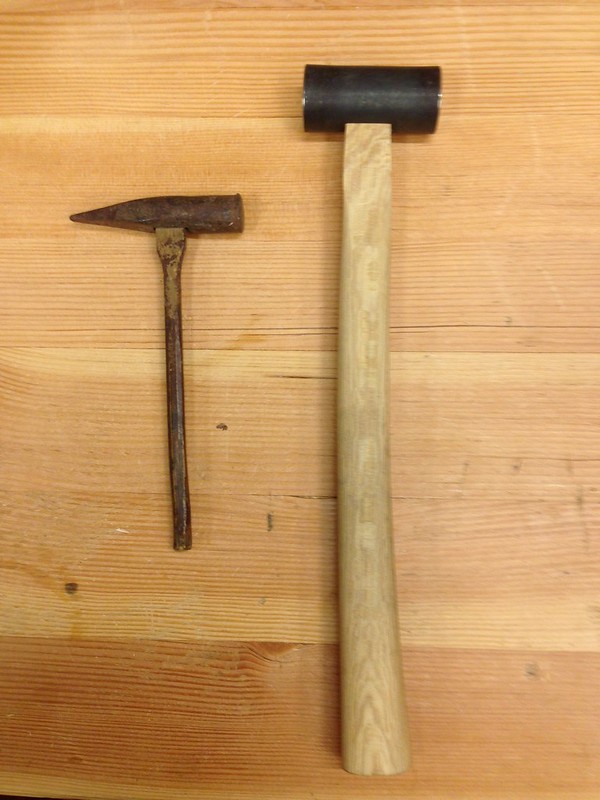I have often read warnings of cracking a japanese plane blade if ura-dashi (tapping out the back) is done improperly, but I have never seen the failed results. Well, I cracked a blade tonight, and the results are horrible.
I re-beveled the blade to a slightly steeper angle, and needed to tap out a new flat. I had just started with some light taps on the blade against my anvil, listening for a dull thud sound as I strike the blade to know the back is adequately supported. As I was making my way across the blade and establishing a rhythm, I saw the large semi-circular crack appear. Note that none of the hammer marks are near the edge.
This is not my first time attempting ura-dashi. I have successfully tapped out blades on 4 or 5 other times. What really surprised me is how the blade cracked when I was using fairly light taps. To fix this blade, I will have to grind off better than 1/4 inch of blade. This is no cheap blade. It is a good (i.e. expensive) Yamamoto swedish steel blade.



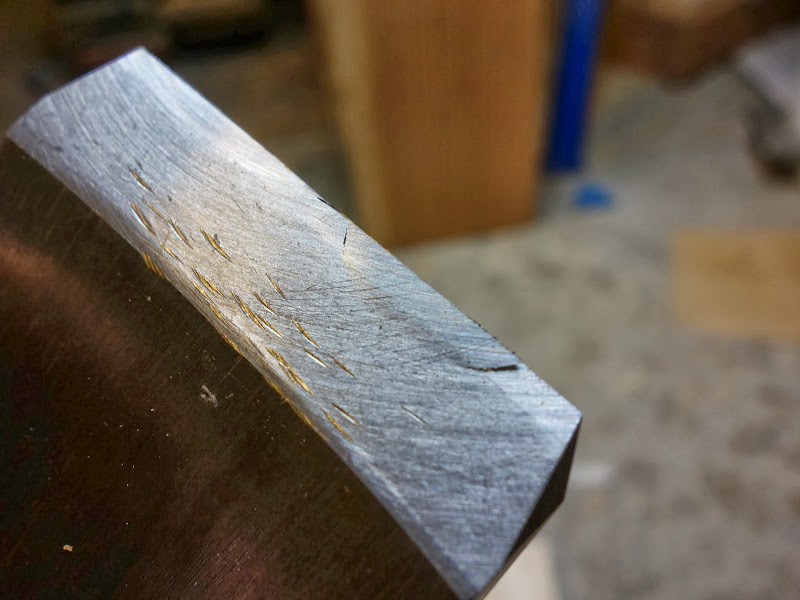
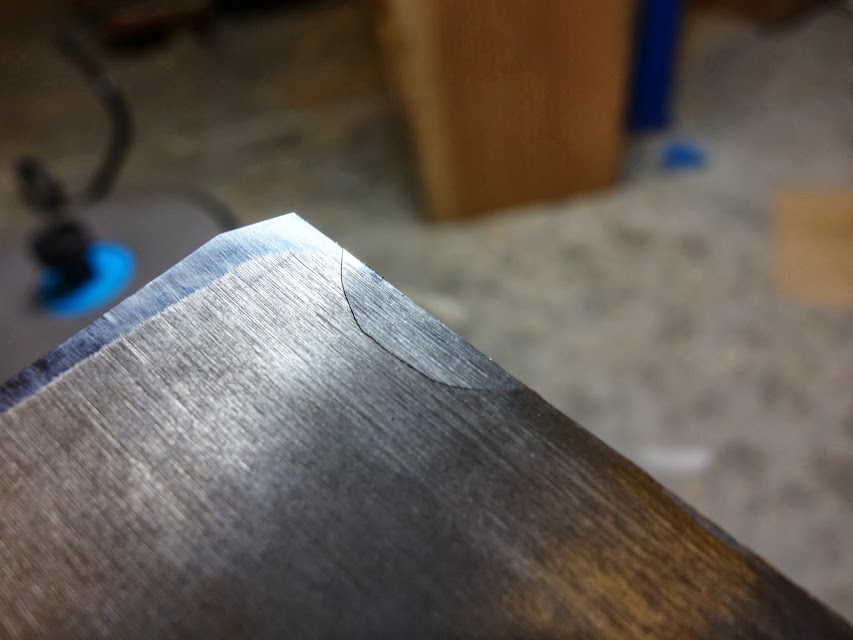

 Reply With Quote
Reply With Quote




